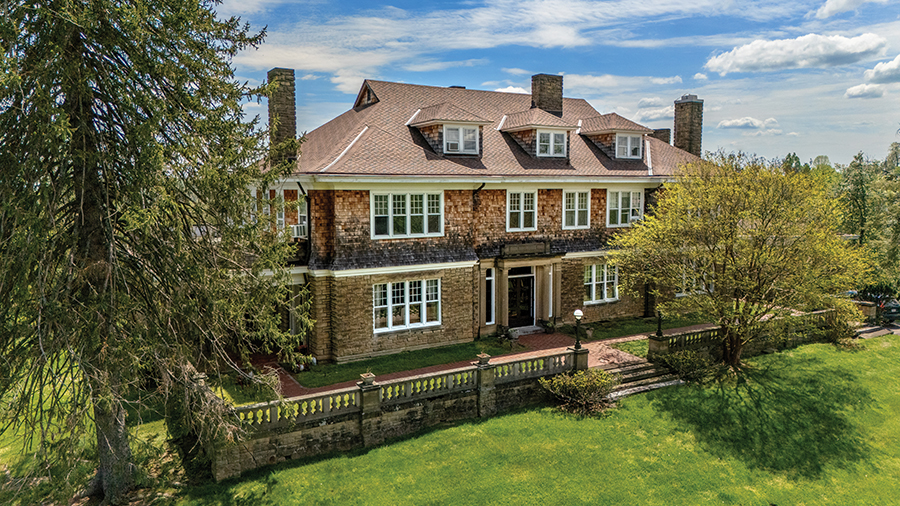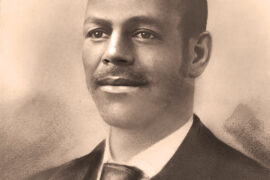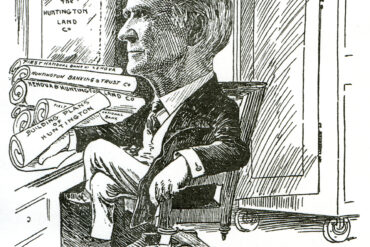A mansion on McCoy Road has served a home to a lumber baron, a convent for nuns and, most recently, the residence of an esteemed surgeon and his family.
By Benita Heath
HQ 130 | SUMMER 2025
A visitor approaching the McCoy Road home of Dr. and Mrs. Robert W. Lowe is tossed into a quandary. Which is more breathtaking — the magnificent sandstone structure or the view from its grounds?
Probably the best answer is both. Sally Lowe certainly has found great pleasure in her home and its scenic view overlooking Huntington. Since 1982, she and her husband have enjoyed raising their four children (now grown) and living in the iconic structure. Now empty nesters and nearing retirement, the couple have put the home up for sale.
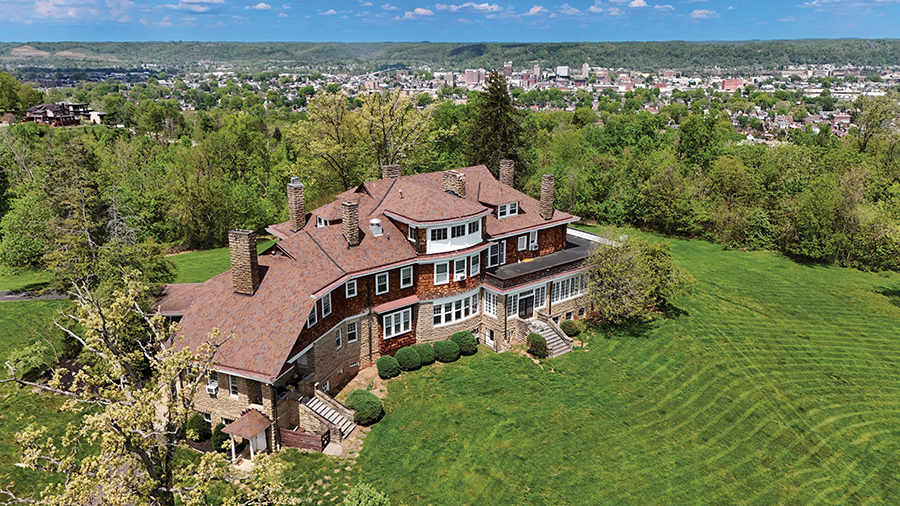
“The last 43 years have been wonderful here,” she said. “When the leaves are off the trees, you can really see the whole city. It’s a treat to look at all the lights.”
Coming down the long driveway toward the home’s porte-cochere, a visitor can almost see the visions of houseguests of a bygone era, where dinner parties were a nightly event and weekend guests were the norm.
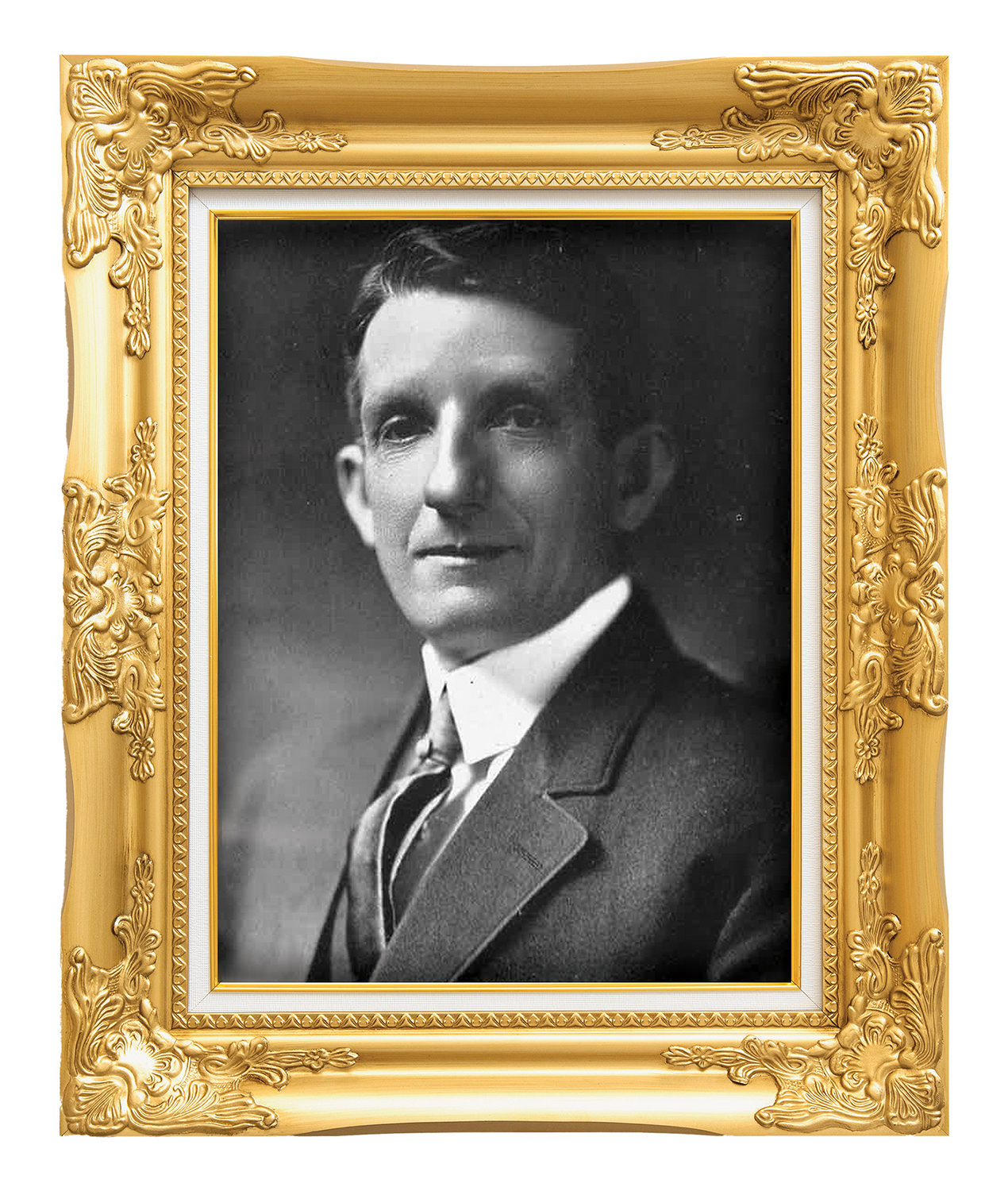
To some, the Lowe home may be better known as the C.L. Ritter Estate, built in 1910 by the Pennsylvania-born entrepreneur. Ritter moved to West Virginia in the late 1800s to make his fortune in the lumber business, and he arrived in Huntington in the early 1900s to head up the Rock Castle Lumber Co. He also was instrumental in creating Ritter Park, which the house famously overlooks. He was married to the former Mabel McClintock, a fellow Pennsylvanian and a graduate of what was then Marshall College.
The Ritters had three sons, one of whom, Charles Lloyd, reminisced about his old homeplace with the Lowes before his death in 1989.
“Mr. Ritter told us the stone was quarried just over the hill from here,” Sally said. “When he was a small boy, he rode a horse-drawn cart that brought the stone up from the side of the hill.”
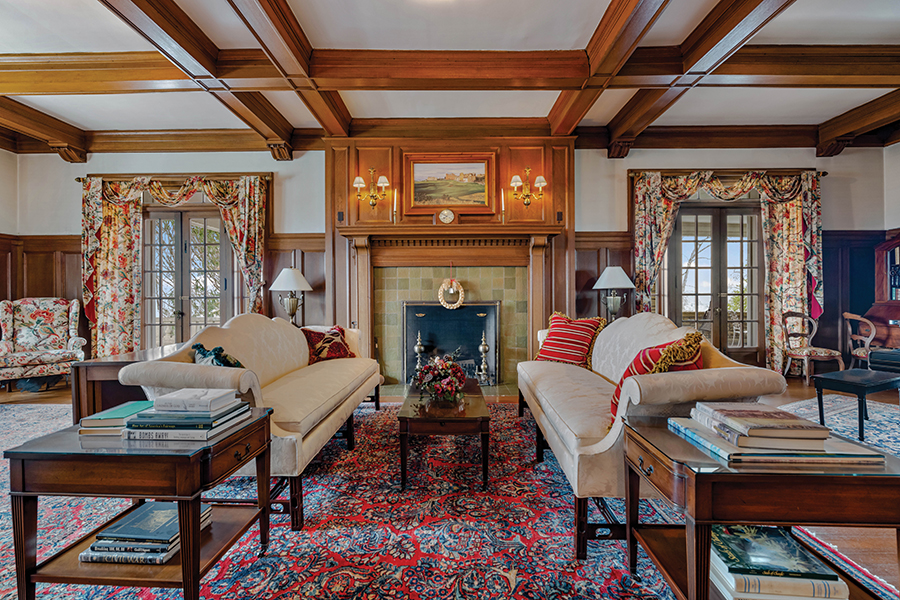
As is fitting for the home of an industrialist in the lumber business, the Ritter Estate is filled with beautiful woods, predominantly oak of various hues.
The warmer tones of the oak paneling in the living room especially appeal to Sally, who said that the room is one of her favorites. Above the tile fireplace, iron sconces stand out in sharp contrast to the lighter oak mantelpiece.
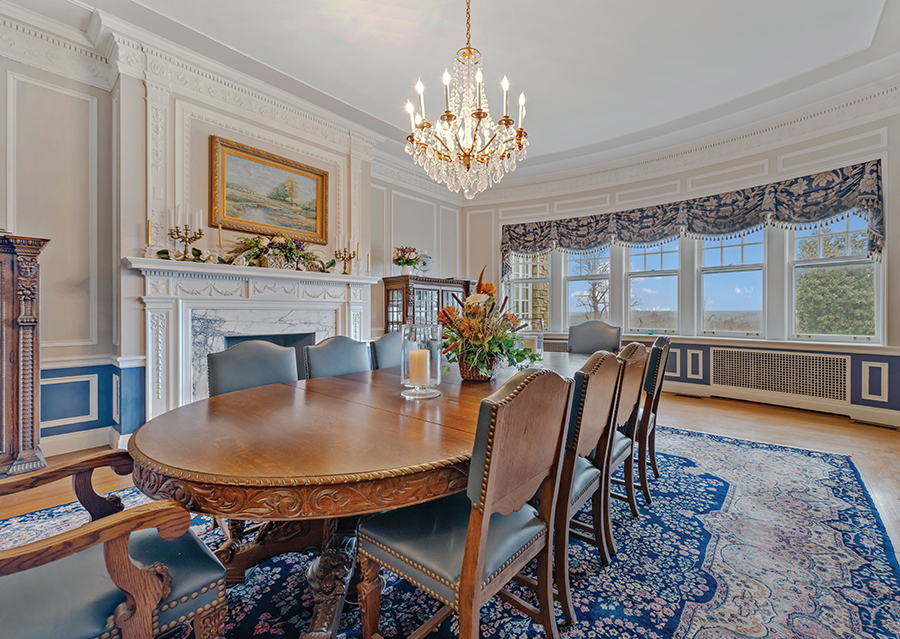
In the corner of the living room is a slant-top desk that had been used in the ticket office at the C&O Railway Station in Morehead, Kentucky. The Lowes picked the piece up a few years ago at a sale at the station. Its solid, imposing design fits in well in the spacious room.
It’s hard to imagine this gracious room once served a different purpose. For nearly 20 years, the Ritter Estate was used as a convent by the sisters of the Pallottine Order, and the living room served as their chapel.
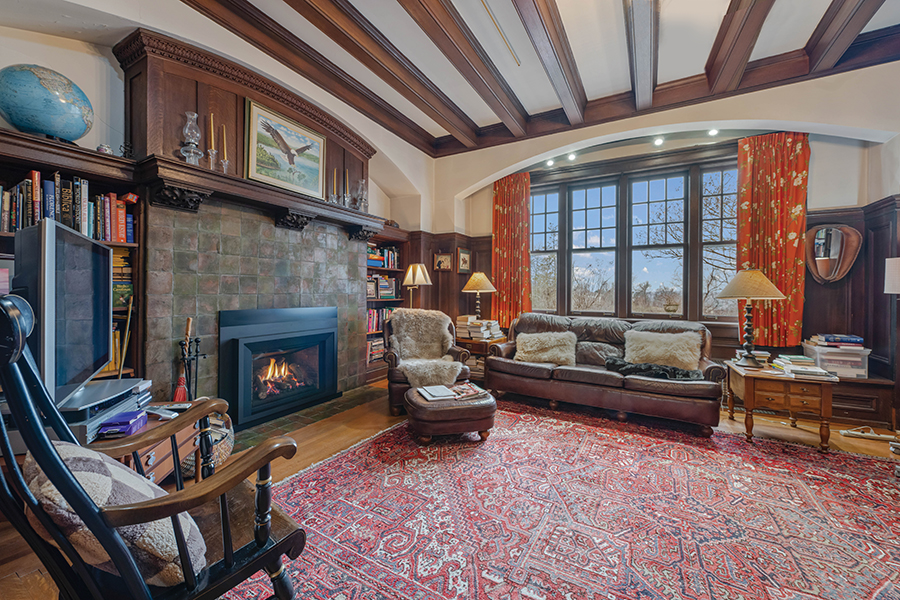
“There were pews screwed into the floor, and the fireplace was covered,” Sally said. “The windows at the far end of the room were blocked by draperies, and an altar was erected there.”
The Pallottine sisters lived in the house from 1951-1971. The home was used to provide novitiate training for the sisters. During this period, as many as 50 women inhabited the home at one time — a testament to just how large the mansion is.
Nearby is the larger dining room, used by the sisters for their meals and by the Lowes for more formal occasions. Framed by ornate moldings, this room is decorated in Wedgwood blue and white and features intricately carved, German-style furnishings chosen by Sally.
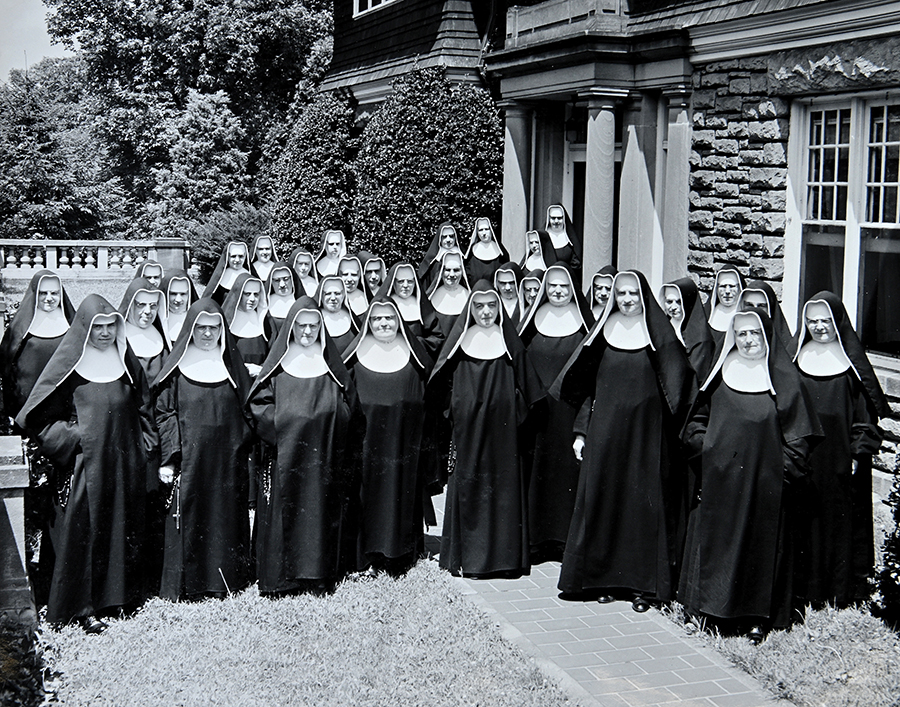
Sally has given her home a pleasingly eclectic aesthetic by furnishing it with pieces from a variety of periods. She has successfully blended Victorian, German and Renaissance-style pieces with the delicacy of Windsor chairs. Decor is chosen for its beauty and personal appeal.
“We like a mixture,” she said. “I don’t stick to one particular period.”
Like the builder of the home, Sally is a native of Pennsylvania. However, she grew up in Alcoa, Tennessee, and said she has an affinity for a more Southern way of life.
As a nursing student at Vanderbilt University, she met her husband Robert when he was a student at the medical school. He is now a highly respected orthopedic surgeon in Huntington.
The couple were established in Huntington before they considered purchasing the Ritter home. They had found themselves in the dilemma of needing more space.
“We had four children and were looking for more bedrooms,” Sally recalled. “We were trying to decide whether to renovate or add rooms, then this came on the market.”
Upstairs on the second floor are eight bedrooms, with four more on the third floor. A second-floor bathroom boasts the first shower built in Huntington.

The scale of the house fits the era in which it was built.
“In the ’20s and ’30s, that was a boom time,” Sally pointed out.
Big house parties and luncheons and dinners two or three times a week were the norm. On staff in those days were eight to nine servants, including a cook, butler, laundress and gardener.
Sally said she appreciates the home not only for its beauty but also for the rich history it holds.
She summed it up neatly: “We enjoy what we have.”

